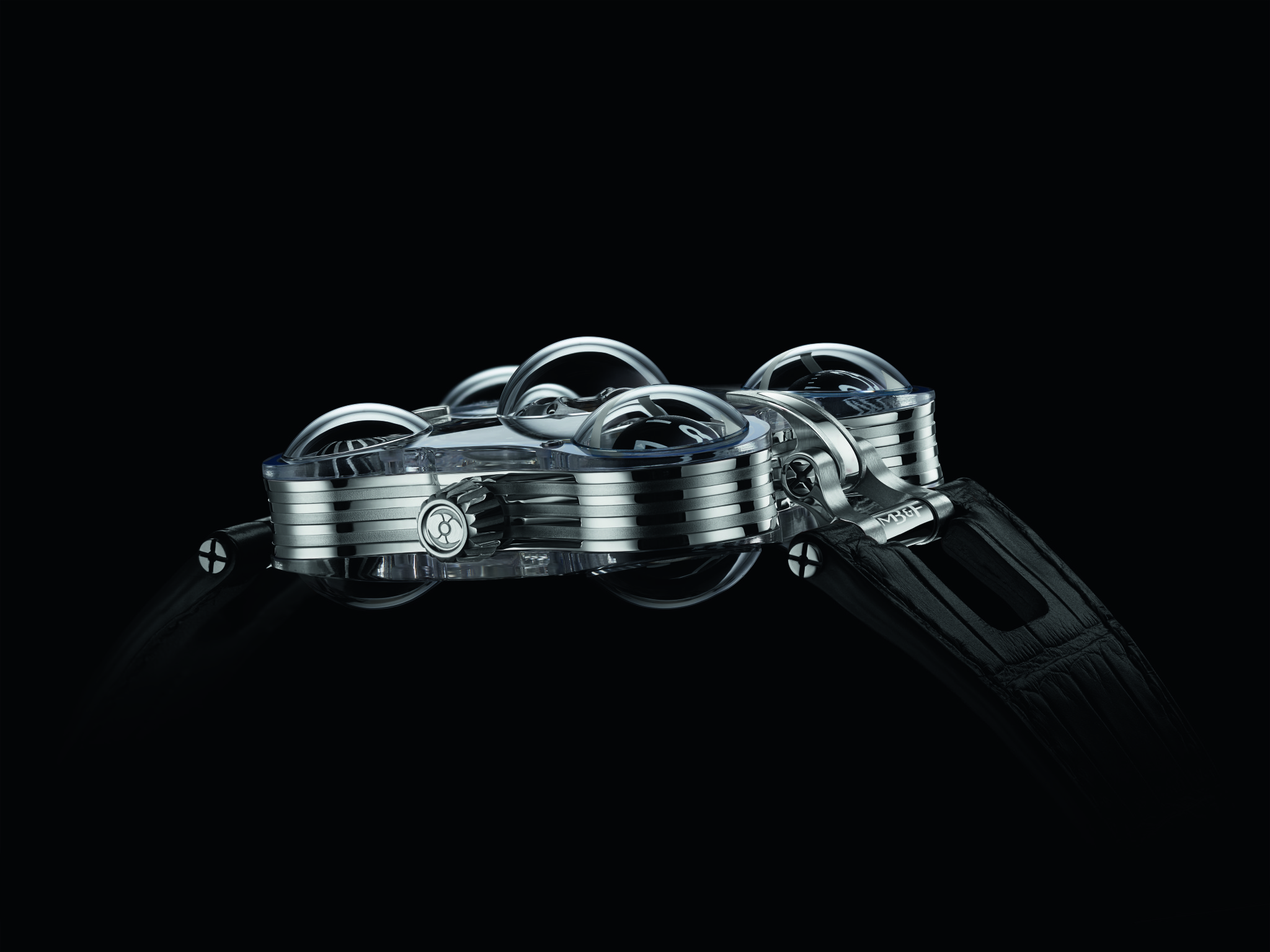It’s not just the British steel industry feeling the squeeze of dumped Chinese commodities, the boss of one Swiss sapphire specialist fears his profession might soon die out in Switzerland.
Sébastien Sangsue, managing director of Swiss sapphire crystal specialist Sebal SA, confirmed that his industry was struggling to cope with competition from cheap Chinese alternatives.
“Yes, it’s true,” said Sangsue, speaking exclusively to WatchPro through a translator. “We undergo a high pressure for the prices and we must try to assert our job in technical products. But every year, we are losing market share in volume. If the companies continue to produce in China, in short term our profession is going to disappear.”
WatchPro approached Sangsue following the recent release of a number of sapphire crystal-cased watches from brands such as Visconti, Hublot, H. Moser & Cie and MB&F – which credited Sebal SA as the company that produced the sapphire case for its HM6 SV, pictured above.
While the watches each have a retail price ranging from five figures for the Visconti, £43,600 for the Hublot and CHF 350,000 (£253,000) for the MB&F, they are a far cry from the price of the very first watch with a crystal case, the Richard Mille RM056 from 2012 which sold for US $1.65m (just over £1m).
Sapphire crystal, one of the hardest known substances, is notoriously brittle and difficult to machine, a factor often credited with the high prices of the final watch. Sangsue, who has been at Sebal for 22 years, confirmed this is still the case, saying: “The middle machining of sapphire is very difficult because it’s impossible to know [what] percent will be defective product. A small break or a small defect can happen [at] the end of polishing, and it’s a product to throw [away].”
WatchPro asked if the downward trend in pricing of sapphire-cased watches related to improved manufacturing techniques or whether other factors were at play.
“Yes, the manufacturing process has changed,” explained Sangsue. “But the fall in prices is more the relationship with the provenance of the finished products than manufacturing gains. One of the important points that generates a difference in prices is the quality of execution, what is accepted or not in the final quality (points, internal defects, scratch,..) [by the] timepiece company.”
It was suggested to WatchPro at Baselworld that while cheaper Chinese sapphire crystal watch glass floods the market Swiss producers are having to produce superior sapphire and more technically complex finished products to remain relevant, something that Sangsue’s comments would seem to support.
Sangsue suggested that greater transparency was needed relating to the origin of watch components to offer a fairer deal to both parts manufacturers and consumers.
“In [Switzerland] we produce a small part of watch glasses. If Swiss timepiece companies had more transparency on the origin of these components ( Dial, hands, case…) I think that it would be easier to know why we have a lot of differences in prices and this point in all timepieces products.”
Such a move has only recently been undertaken by a Swiss group launching via crowdfunding. Read about the Goldgena Project here and here.


I don’t understand why companies aren’t filing complaints with the WTO. Stanley furniture did and was awarded $39 million in 2012